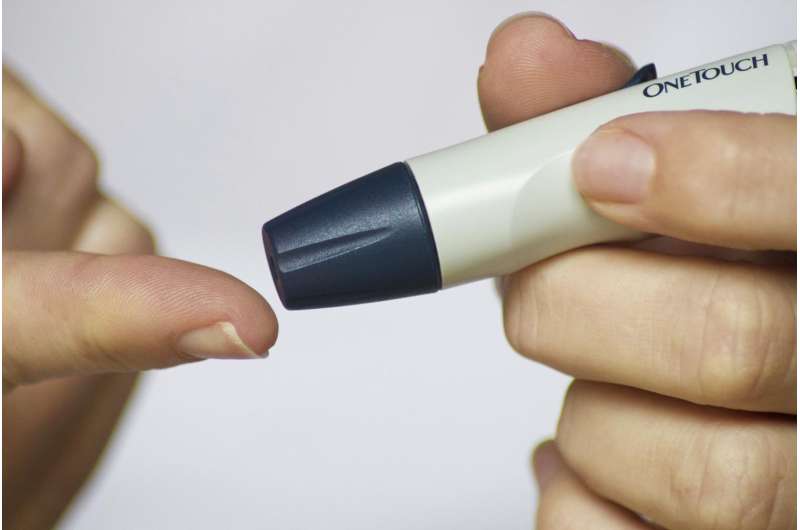Seemingly healthy levels of liver fat can trigger type 2 diabetes, UK study suggests

New research presented at the Annual Meeting of the European Association for the Study of Diabetes (EASD), held online this year, found that the amount of fat stored in the liver is higher in people with type 2 diabetes (T2D), whatever their BMI.
It also suggested that levels of liver fat currently considered to be healthy can be metabolically harmful in people with a normal BMI, causing T2D.
The most common form of diabetes, T2D occurs when the pancreas can’t make enough insulin (a hormone which helps turn the sugar in food into energy) or the insulin it makes doesn’t work properly.
Previously, the landmark Diabetes Remission Clinical Trial (DiRECT), from Glasgow and Newcastle universities, showed that an intensive weight loss programme delivered by GPs can put T2D into remission in people who are overweight.
The DiRECT trial suggested that excess fat stored in the liver and pancreas drives the development of T2D—and loss of this intra-organ fat is key to remission.
It is known that the excess fat in the liver prevents insulin from working properly, while fat in the pancreas is thought to stop the insulin-producing cells from working properly.
The latest research, from Professor Roy Taylor and colleagues at Newcastle University, looked at whether intra-organ fat is also elevated in people of normal weight with T2D. It also examined how levels of intra-organ fat changed after weight loss-induced remission.
It used data from two BMI categories. The first was made up of 56 participants from the DiRECT trial. They had an average BMI of 35.1, which is in the obese range, and an average age of 53.
The second cohort was made up of 15 participants in the Reversal of Type 2 Diabetes upon Normalisation of Energy Intake in the Non-obese (ReTUNE) trial. ReTUNE is looking at whether weight loss can put T2D into remission in people who are of normal weight.
These participants had an average BMI of 24.3, which is in the normal range, and an average age of 58.
Both cohorts followed a weight management programme designed to bring about remission of T2D through 10-15% weight loss. This involved consuming 800 calories a day (from low calorie soups and shakes) to induce weight loss, followed by support in maintaining their new weight.
Scans were used to measure levels of fat in the liver and pancreas before and after weight loss.
Finally, the results were compared to a group of controls—people without diabetes who were matched for age, sex and BMI.
Liver and pancreatic fat were higher in those with diabetes, whatever their BMI, than in the controls and fell with weight loss.
Liver fat fell dramatically In the DiRECT participants, dropping from an average of 16% to 3%. The figure for the overweight controls was 5.5%.
In the ReTUNE participants, liver fat fell from 4.7% to 1.4%. The figure for the normal weight controls was 1.9%.
Levels of intrapancreatic fat also decreased. They fell from 8.5% to 7.6% in the DiRECT participants (control, 6.8%) and from 5% to 4.5% in the ReTUNE participants (control, 3.4%).
A similar proportion of people in both cohorts—60% of the DiRECT participants and 67% of the ReTUNE participants—achieved remission of their T2D. Remission was defined as was defined HbA1c (average blood sugar level) of less than 48mmol/mol and off all medication.
More data from the ReTUNE trial is being presented at this meeting and is presented in a separate press release with the same embargo as this material.
The researchers say their results show that levels of liver fat vary with weight and that the threshold for a healthy level of liver fat should take into account a person’s BMI. At present, it is assumed that a liver fat level of less than 5.5% is healthy whatever a person’s BMI.
Professor Taylor adds: “It clear that if an individual has type 2 diabetes, they have more fat inside their body than they can cope with, even if they seem to be slim.
“These results also show that levels of liver fat vary with weight and that levels currently considered to be healthy can actually be harmful in lighter people.
“At present, it is assumed that a liver fat level of less than 5.5% is healthy whatever a person’s BMI.
“We need to change the way we assess liver fat, to take into account BMI.”
Citation:
Seemingly healthy levels of liver fat can trigger type 2 diabetes, UK study suggests (2021, September 28)
retrieved 2 October 2021
from https://medicalxpress.com/news/2021-09-seemingly-healthy-liver-fat-trigger.html
This document is subject to copyright. Apart from any fair dealing for the purpose of private study or research, no
part may be reproduced without the written permission. The content is provided for information purposes only.
